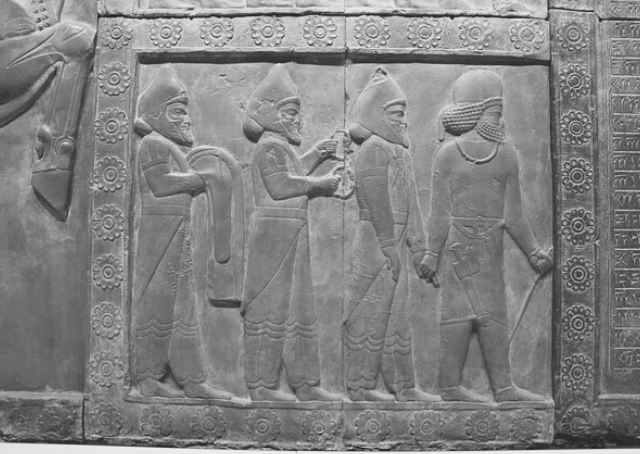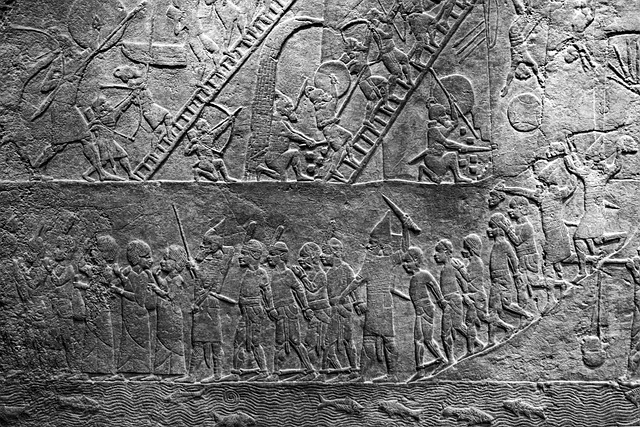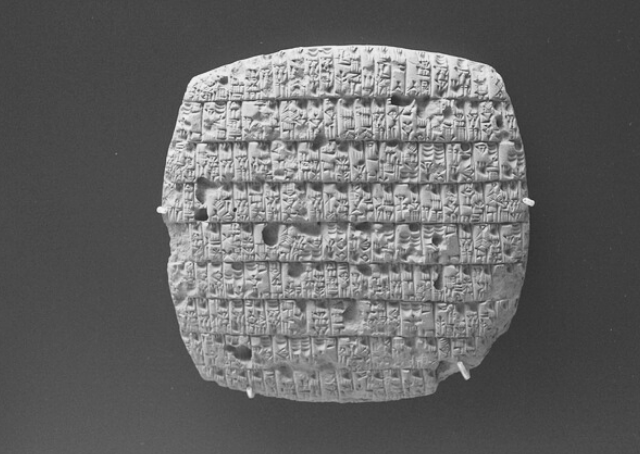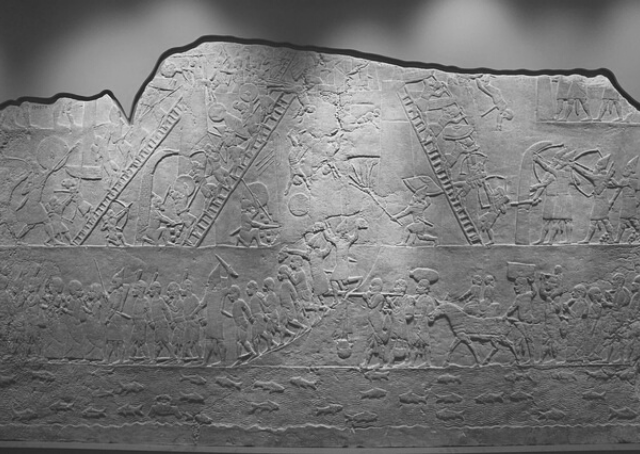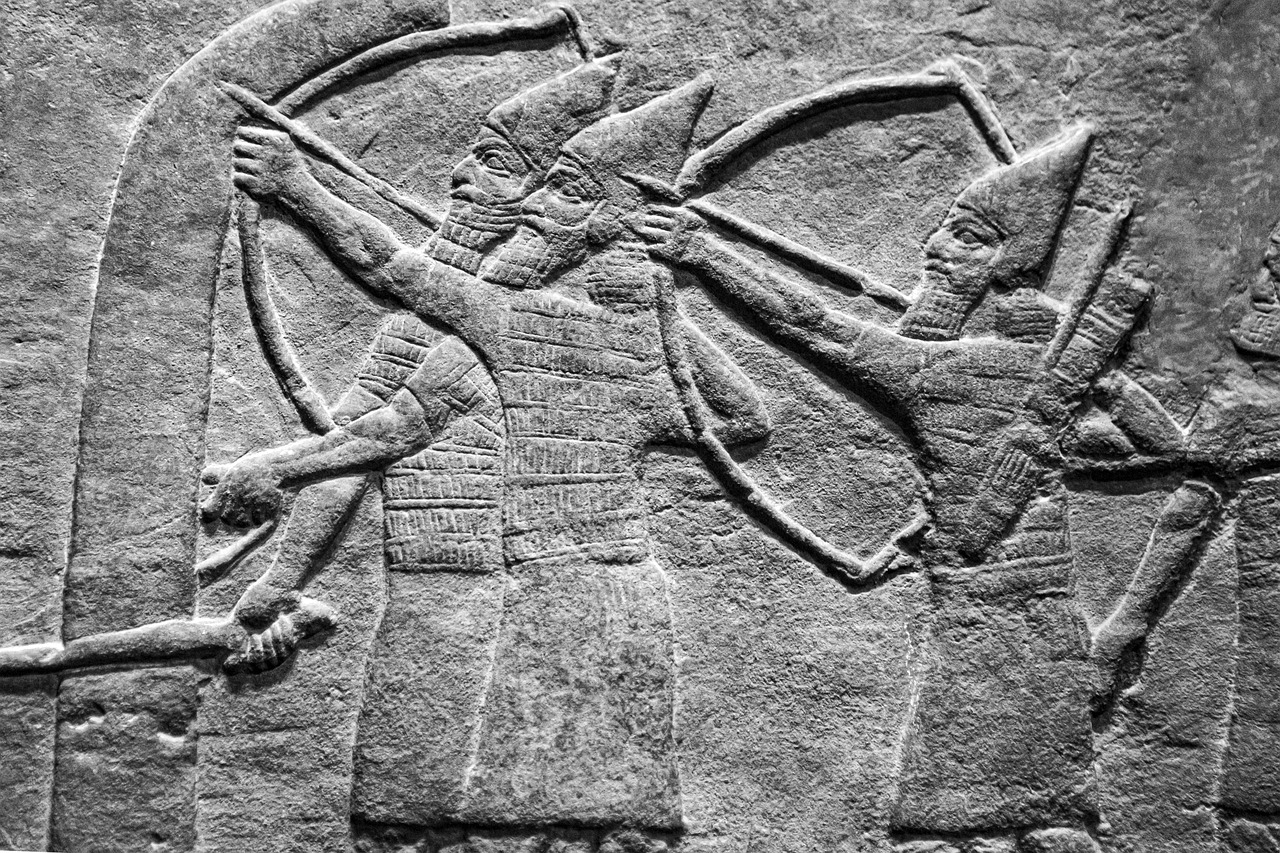Sumer The Earliest Known Ancient Civilization – History of The Sumerians
Sumer was the earliest known ancient civilization in the Mesopotamian region between the 6th and 5th millennium B.C. The Sumerians were known for their innovations in language, architecture, and a system of governance.
They invented the wheel, the plow, and the ancient writing system. Sumerians were also known as the first people to migrate to Ancient Mesopotamia, now modern-day Iraq. From small farming villages, the society soon grew to a walled city and eventually turned into a great civilization.
The civilization heavily relied on two rivers, the Euphrates and Tigris, for drinking, irrigation, and transportation. The rivers would routinely flood out and create the richest soil in the east. The first Sumerian city, Uruk, was known as the world’s first city.
For more than 3,000 years, the people in Mesopotamia maintained cultural unity. They remained in control of the region until the Babylonians conquered them.
Who Were The Sumerians?
The word “Sumerian” is an external name used by Akkadians to call the non-Semitic people living in Sumer. Sumerians called themselves sagiga, which meant “black-headed people.” Their land Sumer is known to them as ki-en-gir, which translates to “land of the civilized lords.”
Before settling in Sumer, their early population was known as the Ubaid people. The Ubaid people were farmers and carpenters who spent their lives raising cattle, working with carpentry, and weaving textiles. The origins of the Ubaid people are unknown, but there are several theories. Some scientists and historians believe they have descended from ancient Turkey and expanded agriculture, metalwork, and pottery they already started in their first region.
Sumerian Government and Culture
Ancient Mesopotamia has a government that can be described as a combination of monarchy and democracy. The Sumerian kingdoms have several cities in which Kings appointed by gods ruled. Priests and scribes assisted the kings.
Sumerians were religious people whose communities were organized around a temple and ruled by a priesthood. Each priest serves a king of their cities. All the people under the rule of the priests and king considered themselves servant-slaves of the temple god. Whenever they experienced calamities such as drought or fire, they believed it resulted from disobeying their gods.
The system was the same until 3000 BC, when the King position was no longer elected but hereditary. Monarchy held power over significant areas of land. Priests took over middle management and took all responsibility for surveying and distributing land and crops. The priests were also the ones who collected taxes, decided justice, and supervised canals and temples.
The social classes in Sumer were hierarchical and patriarchal. Wool was the essential clothing material, and both men and women wore skirts made of fleece-like fabric, known as kaunakes. The skirt length signified hierarchical status. Most servants, slaves, and soldiers wore short skirts, while royalties and deities wore long skirts.
Where did the Sumerians live?
The Sumerian civilization emerged between the two rivers Tigris and Euphrates. Here they created a great civilization and constructed cities along the rivers. The exact origins of Sumerian civilization in Mesopotamia are still very much unknown. Nevertheless, recent archaeological findings indicate that they established several towns by the fourth millennium B.C. Their cities usually had a walled metropolis with ziggurats, pyramid-like temples that are a significant part of their religion.
Sumerians lived in a time where Mesopotamia was a fiercely harsh place for people to live. The northern part was hilly and received too little rain. The rivers that were near the plains always flooded, which made it an uncontrollable source of water. There was also a shortage of food as there were no wild animals available to hunt.
The Sumer land is flat and marshy, which made it easy to extract a lot of mud. Most of the Sumerians lived in houses made of bundled marsh reeds or mud bricks. The climate is arid, with only around 16.9 centimeters of rain falling each year. Because of the dry land, no trees other than palm trees grew in the region. However, over time, Sumerians found solutions to these problems.
The farmers learned to control the water from the two rivers by creating irrigation systems. They also built earth walls called sleeves to prevent the river’s sides from flooding into their communities. When the land was dry, they poked holes in the leaves, which allowed water to flow through the field. The Sumerian people started to live along the banks of the two rivers. They constructed canals and used the water of Tigris and Euphrates to fuel their farming civilization for years.
Sumerian Writing
The Sumerians were fascinatingly inventive people who were known to have been the first people to develop writing. The Sumerian language was the oldest known linguistic record. Even before 3000 B.C.E, Sumerian language consisted of symbols and pictures. Over time, these symbols became more straightforward and abstract.
They wrote on tablets made of clay, and later this writing evolved to scripts known as Cuneiform. Cuneiforms, which are mostly seen in clay tablets, appear as far back as 4000 B.C. These clay tablets were baked and hardened so writing on its surface can be preserved. Cuneiform revolutionized the communication, enumeration, and literature of the Sumerians.
One of the earliest known works of literature is the Sumerian poem called the Epic of Gilgamesh. It described the heroic adventures of the Sumerian king. This inspired many cultures to create stories of their own.
Cuneiform also had a significant role in commerce. It helped merchants record and keep track of their products, leading to increased trade with neighboring lands. Archeologists have found several Sumerian detailed records on clay tablets of rations, taxes, and offerings. They also found board games drawn on clay. Scientists believe Sumerians have a vast collection of literary works, but only a few of them were ever documented. By 2000 B.C., the language of the Sumer was replaced by Akkadian, but the Cuneiform went for another 2,000 years.
Architecture
Sumerians were skilled builders and craftsmen. Archaeologists have found structures as far back as 5300 BC during the Ubaid period. During this time, homes were made from bundled mars reeds and mud bricks. Most buildings have arched doorways and flat roofs.
When architecture advanced, sophisticated brick homes replaced the marsh reed houses. The brick homes were adorned with metal sculptures, terracotta ornamentations, columns, intricate mosaics, and mural paintings.
Ziggurats were famous religious temples in Mesopotamia, and they’ve only begun to appear around 2200 B.C. These impressive pyramid-like structures stood about 170 feet high and featured sloping sides with gardens on their terraces. This was what inspired the architecture of the Hanging Gardens of Babylon.
Religion
Sumerians recognized many gods (polytheism) who resembled humans in form. These gods were known to have created the universe and controlled the events in the natural world.
The gods also had human-like emotions such as love, anger, sadness, etc. They tried to predict what gods would feel and would do offerings and sacrifices if they believed they angered the gods.
Sumerian gods round up to thousands but here are some of their famous ones: Inanna (god of love and war), An( god of heaven), Enki (god of water and humans), Enlil (god of wind and storm), Utu (the sun god), and Sin (moon-god). Sumerians believed that heaven was a place only for deities. All mortals, upon death, will go to Kur, a cold dark cave under the earth where the only food was dry dust. There you will meet Ereshkigal and Nergal (the god of death).
Ziggurats
Their main temple, called the ziggurat, is usually the tallest building in the city. Ziggurats resemble a pyramid, but they typically have a flat top where priests perform rituals and sacrifices. A single ziggurat would usually have 2 to 7 levels. Each level would be smaller than the one below. All ziggurats have a square base, just like a pyramid. The ziggurat’s core is made of mud brick, and its exterior is covered with baked brick.
Many of the ziggurats of Mesopotamia are now destroyed. The enormous ziggurat of Babylon was said to have been in ruins by the time of Alexander the Great. Today, there are 25 ancient ziggurats known to have been preserved. One of them is the ziggurat at Chogha Zanbil, which is often considered the last surviving ziggurat.
Afterlife
The Sumerians didn’t believe in an afterlife. They also thought that gods were powerful, but they were not always kind. According to their priests, god owned their states, and they were slaves who needed to pay rent for god.
Sumerian religion heavily influenced the religious beliefs of the later Mesopotamian cultures. These influences were apparent among the Babylonians, Akkadians, and Assyrians. Scholars also saw comparative mythologies of the ancient Sumerian religions to the early Hebrew Bible.
Sumerian Agriculture and Mining
Knowing how harsh and forbidding is the land in Sumer, it’s impressive how our first civilization arose in its region. According to scientists, Sumer was dry land. Still, because of the silt carried by the river down the mountains, crops grew very well whenever the river overflowed. There was also a lot of sunshine which was suitable for the vegetations. The creation of canals and dams is what made the place habitable and sustainable. So, what was once a dry and arid desert became a blooming rich city.
The Sumerians farmed barley as their main crop and had onions, peas, turnips, wheat, dates, flax, apples, grapes, and plums. Sumerians also fished and hunted wildfowl along the river. They also bred sheep and goats and mainly used milk, cheese, butter, and meat. In the large town of Ur, there was an enclave that housed 10,000 animals where 3,000 were slaughtered each year.
Inside the city of Uruk, there’s also a large temple for the god Inanna. A portion of the city’s agricultural production is given as an offering and stored at her temple. The rest are given back to the citizens of Uruk in equal share at regular intervals.
Farmers in Sumer were known to hold back floods from their fields and used canals to channel river water to their crops. They also used oxen to pull their plows. Grains were harvested with sickles in spring. Food was abundant in Mesopotamia, which allowed the population to increase. Because there was a surplus in Sumer food, people had the time to pursue other occupations other than farming and hunting. They became merchants, craftsmen, and artisans who increased the city’s wealth and power
Mesopotamia didn’t have copper in their valleys, and the only source of copper was in the mountains to the east and north. They learned to obtain copper from ore only by 4000 BCE. They also learned to trade food, cloth, and manufactured items for raw materials such as copper., timber, and stone. Most of their merchants would travel to the north of the rivers and trade with people from the Mediterranean, Persian Gulf, and India.
Technological Innovations
Sumerians used a wide range of technology. They were also the first ones to invent some of humanity’s most critical technological discoveries. The list is quite long, but here are some of their best inventions: the plow, the wheel, sailboats, lunar calendar, irrigation, harpoon, saw, sandals, and beer.
The Sumerian wagon had leather tires that were held in position by copper nails. They were drawn either by four oxen or four onagers (wild asses) which had collars, yokes, headstall controlled by reins. Horses didn’t come to Mesopotamia until about 4000 BP.
One of their most impressive advancements was hydraulic engineering. In the early days where the rivers regularly flooded, they created a ditches system that helped control flooding. The same technology also harnessed the power of the rivers for farming. Unlike the Egyptians, who had a lot of timber, Sumerians had almost no supply of wood. They also didn’t have a lot of stone. The only thing they had in abundance was mud. And with dirt, they built towering ziggurats and a great civilization. It was genuinely Sumerian innovation that turned Mesopotamia from a desert into an oasis.
Mathematics
Sumerian mathematics was based on a sexagesimal (base 60) numeric system. They were easily counted using twelve knuckles and five fingers on the other hand. Unlike the numeric systems of Egyptians, Greeks, and Romans, thor numbers used a real place-value system, just like our modern decimal system but with a base of 60 instead of 10.
Scholars have remarked that 60 was used as their mathematical base because it had so many divisors. It’s also the smallest integer divisible by 1 to 6. This system was adopted in many fields. For measuring time, there are 60 seconds in a minute, 60 minutes in an hour. The circle has 360 (60×6) degrees.
Using their advanced math, Sumerians also followed the stars’ movement, planets, and the Moon. They began to predict the movements of several planets. They were also the first to develop a calendar based on the lunar phases.
Notable Periods in Sumerian History
Ubaid Period (6500 – 4100 BCE) – First settlements in southern Mesopotamia. The people were mostly farmers who brought irrigation to the land. They were also skilled potters who were known for their painted pottery.
Uruk Period (4100 – 2900 BCE) – Large, temple-centered cities run by priests-kings were all Mesopotamia. People started to trade goods using the waterways. Pottery was mass-produced and utilized slave labor
Early Dynastic Period (2900 – 2334 BCE) – Writing further developed. There were several kings and dynasties in the region. War was increasing, and most of the cities had erected high walls to defend their states
Akkadian Empire Period (2334 – 2218 BCE) – Akkadian grew into an Empire and lived in northern Mesopotamia while Sumerians stayed in the south. The Akkadian Empire continued to expand and attacked territories in the east. The Sumerian king rose to power and took the city of Akkad. However, it eventually grew weak that the Amorites of Babylon later conquered it.
Final Thoughts: What Happened to the Sumerians?
After the Babylonians and Amorites occupied Mesopotamia in the second millennium B.C., they gradually lost their cultural identity and slowly perished. However, despite being invaded and conquered by the Amorites and Babylonians, Sumerian’s cultural legacy continued.
Their writing system, Cuneiform, was adopted by the Amorites and used to record their languages. The ziggurat’s architecture was also what influenced the design of many Babylonian structures. And many of their inventions were adopted and used by their invaders.
Summary
Sumerians are indeed an extraordinary group of people. They single-handedly created the blueprint that will help other civilizations prosper into the future.
Sumerians were the earliest known ancient civilization that originated in the Mesopotamian region.
Their civilization emerged between the two rivers Euphrates and Tigris.
Sumerians had a temple they called ziggurats. Ziggurats were said to have inspired the Hanging Gardens of Babylon.
Sumerians were polytheistic and had thousands of gods. They believed gods controlled events in the natural world.
The Amorites of Babylon later conquered Sumerians. Their civilization perished, but their cultural and technological influences remained alive up to this day.
